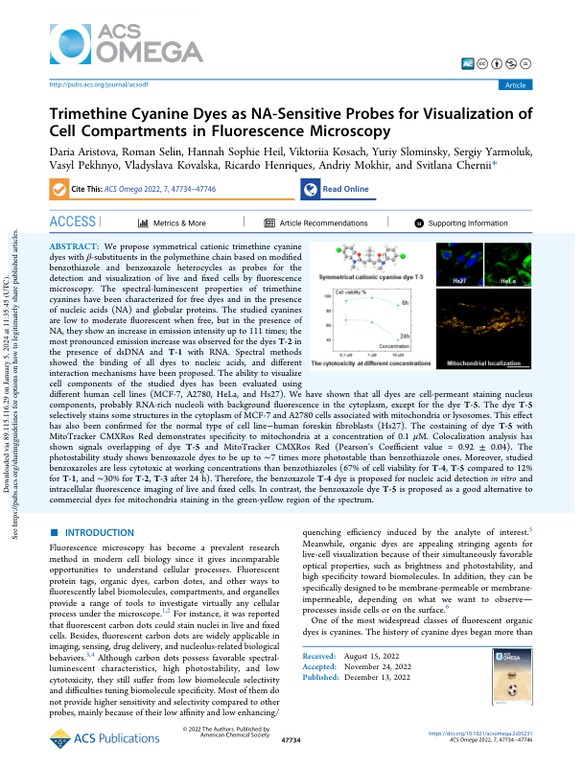Trimethine cyanine dyes as NA-sensitive probes for visualization of cell compartments in fluorescence microscopy
Paper published in ACS omega, January 2022
Publisher: American Chemical Society

The manuscript reports on the development and characterization of symmetrical cationic trimethine cyanine dyes, specifically T-1 to T-5, for nucleic acid detection and visualization using fluorescence microscopy. The dyes exhibited significant emission intensity increases in the presence of nucleic acids, with the most pronounced increases observed for T-2 with dsDNA and T-1 with RNA. The dyes were cell-permeant and selectively stained nucleic acid components, primarily RNA-rich nucleoli, with some background fluorescence in the cytoplasm. Dye T-5 specifically stained structures in the cytoplasm associated with mitochondria or lysosomes. The benzoxazole dyes were found to be more photostable and less cytotoxic than benzothiazole ones, making T-4 a suitable option for nucleic acid detection in vitro. The study also compared the fluorescent sensitivity, photostability, and cytotoxicity of benzoxazole and benzothiazole cyanine dyes. The results confirmed mitochondria staining by benzoxazole T-5 dye using colocalization analysis with MitoTracker CMXRos Red.